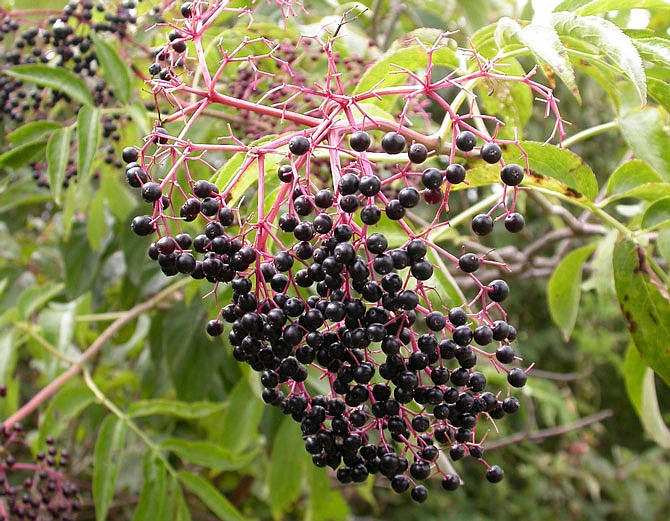Wild berry jams and lemonades, acorn paste and sunchoke soup - these are just some of the foods that can be made from wild plants found in Missouri.
A Friday virtual presentation from the Missouri Department of Conservation's Jamie Koehler focused on the edible bounty that grows in Missouri.
"Normally, we go outside, as soon as we've taken a look at the slides and we walk around and see what we can find," Koehler said. "I challenge you today, after we finish here in the digital part of this, to go outside and see what you can find right in your neighborhood."
Before foraging, Koehler recommends making sure you know what you're looking for and what else it might look like.
"Take a book with you or or take up grandma with you, somebody that knows and can identify things," she said.
The wild grape looks like grapes found in the grocery store but should not be confused for moonseed, which looks similar but are considered toxic to some people. Wild grapes have tendrils and leaves with toothed, jagged edges, while moonseed has smooth-edged leaves and seeds that resemble moons.
"Make sure you're aware of any kind of look-a-likes like wild grapes and moonseed," she said, "anything that could cause you to make a mistake and eat something you shouldn't."
Some edibles, like the elderberry, are currently in season.
Koehler said elderberry is a favorite of hers, used to make homemade cough syrup.
"This is a low shrub," Koehler said. "Usually, you'll find it at the tree line - it likes a little bit of shade, but it likes some sun too. It does sometimes like some wet feet, so you might find it in some ditches and some creeks."
Elderberry fruit and flowers are edible, though the rest of the plant should not be consumed.
The persimmon is another of Koehler's favorites and the source of an old wives' tale. According to folklore, the shape visible when you cut open the seed of a persimmon will predict what type of winter is ahead.
If you see a spoon shape, there will be lots of snow, while a knife shape indicates cutting cold winter, Koehler explained.
Viewers pitched in their ideas about what a fork shape means - one theory was a fork shape is a sign of good eating, while others believed it indicates a rainy season.
There are some plants, though edible, Koehler doesn't enjoy.
"Some of my wild edibles, I enjoy them because of the taste," she said. "Sometimes, I enjoy them because they're healthy. Sometimes, I enjoy them just for the novelty. And then there's some wild edibles that I recognize and know they're edible, but I kind of put them in the category of, I would only eat this after the zombie apocalypse in order to stay alive."
For Koehler, one of those edibles is the nannyberry.
More exciting is the passion flower, which grabs onto posts and fence lines.
"I always think it looks like something that comes from Mars. It's so exotic looking, but it is a native to our Missouri," Koehler said.
The fruit, known as maypop, has a lemony taste. When a dry fruit is stepped on, it makes a popping sound.
Koehler has eaten many of the edibles that grow in Missouri, trying all sorts of recipes. She said she was grossed out the first time she made wild plum jam and her pot of boiling fruit revealed floating worms.
"I don't know why, but there's a little worm that really likes wild plums as much as we do," she said. "And so if you're going to make jelly or something and you put your fruit on to boil, pretty soon you're gonna have a bunch of worms floating to the top. It kind of grosses you out the first time, but pretty soon, you get used to it, and you just scoop them all out and go on with your recipe. That's my only warning about wild plums."
When it comes to nuts, black walnuts, pecans, hazelnuts and chestnuts all grow in Missouri. Edible Missouri roots include sassafras, with leaves resembling footballs, mittens and ghosts, dandelions and Jerusalem artichokes.
Saplings of many of the fruit and nut trees Koehler described can be purchased from the Missouri Department of Conservation.
The Cape Girardeau Nature Center will have a virtual program about cooking with wild edibles at 1 p.m. Sept. 30. Register at https://bit.ly/3lTYLlh.
"The more that we can teach you about the wonderful resources that we have here in the state, the more you'll help us in our conservation efforts," Koehler said. "So that's why we do programs like this today."

